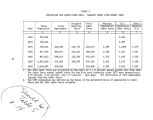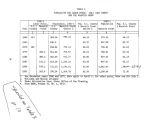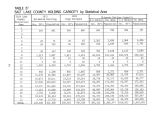| OCR Text |
Show SECTION II MODELS OF POPULATION AND EMPLOYMENT An extensive body of work in simulation modeling of the future economy of Utah and lesser divisions ( multi- county districts and counties) has been developed by experts working within universities and public agencies in Utah. Williams and Mocine has reviewed this work for its applicability in the present 208 planning studies for Salt Lake County. The work by Utah population, business and economic experts was found to be of an exceptionally high order of quality. The various modeling efforts are described below: UPED Alternative Zero; UPED Series C; and the OBERS projections for Utah. The Alternative Zero Projection for the Wasatch Front The modeling effort of broadest scope which has been prepared locally is the Utah Process Economic and Demographic Impact Model ( UPED). Prepared in the Office of the State Planning Coordinator ( of the Governor's Office), it develops eleven alternative futures for the State and its component seven multi- county districts Alternative Zero is the most general assumption of the future, and from it the impacts of specific programs and events are measured in the other ten " Futures," which range from assumptions of a nation- wide depression to " extreme extensive development in the rural and urban areas" of Utah in the next 15 years ( Alternative Future X). Table 1 and 2 show the kinds of economic impacts projected under different alternative futures, as well as accompanying population increases. Note the impacts that each alternative would have on Wasatch Front MCD population. If, for example, the economic events of AF VI were to occur, significant population growth would be added. A print- out of this model for the Wasatch Front counties has been prepared, on the basis of the economic activity assumptions of Alternative Zero. Of the eleven alternative futures, Alternative Zero appears to be related most closely to the assumptions and results of the intensive 4 |















































































